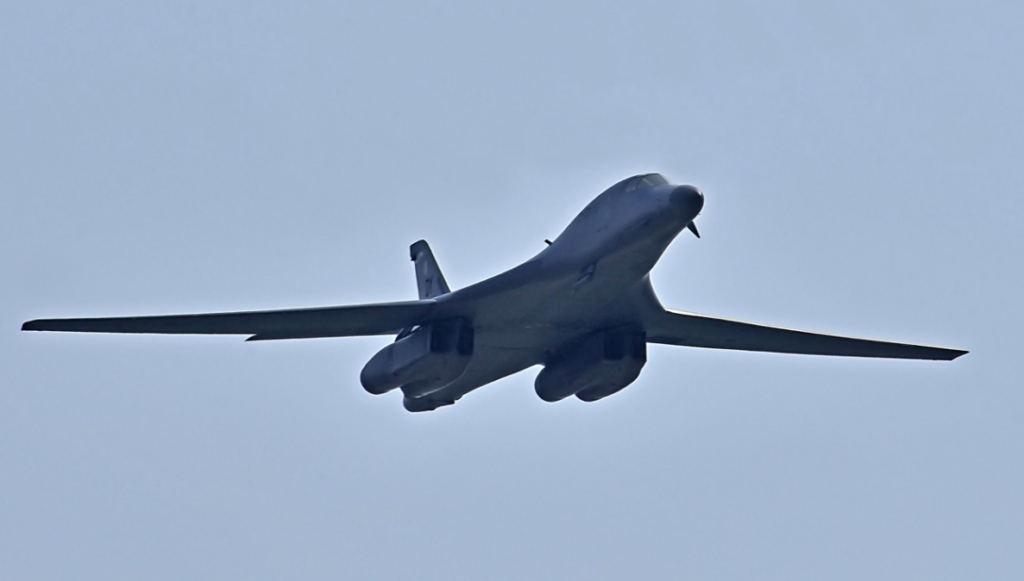The U.S. Air Force Is Sending A Warning To North Korea (With B-1B Lancers)
Originally published by The National Interest.

The presence of Lancers flying alongside some of the most world-renowned fighter jets across the globe over the Korean peninsula was clearly meant to stir Pyongyang into ramping down hostilities.
In a warning to Kim Jong Un, the Trump administration sent two B-1B bombers to the Korean Peninsula to take part in joint drills with Seoul. South Korea’s Defense Ministry also noted that the country’s F-35 and F-15 jets and American F-15 fighters were involved in the military drill. While neither Seoul nor Washington divulged exactly how many aircraft participated, the message was clear: the joint training was carried out to display American and South Korean deterrence capabilities against North Korean threats.
Since the Korean War, Washington and Seoul have abided by a mutual defense treaty, where more than 28,000 American military personnel remain stationed in South Korea in an effort to further deter Pyongyang. As North Korean leader Kim Jong Un has been ramping up hostile rhetoric and actions, the presence of American bombers over the peninsula serves as a significant reminder of the Seoul-Washington alliance.
Introducing the B-1B Lancer to Korea
The two B-1B bombers that took part in the drill this week were deployed on the U.S. island of Guam in the Western Pacific Ocean. This formidable supersonic aircraft has remained in service with the Air Force for nearly half a century. Notably, the service does not plan on retiring the platform any time soon—and has even incorporated an array of upgrades to the B-1B to ensure the bomber retains an edge over competitors.
The B-1B Lancer was developed to match the incredible payload of the Boeing B-52 Stratofortress and the top speed of the Convair B-58 Hustler. Following the Soviet Union’s development of anti-aircraft surface-to-air missiles (SAMs) during the Cold War, U.S. officials desired an even more sophisticated bomber platform to ensure American air superiority. The Advanced Manned Strategic Aircraft (AMSA) program—eventually renamed the B-1A—was reinstated in the early 1960’s, only to be canceled a decade later due to the USSR’s advanced new look-down/shoot-down radar.
But the B-1 program was eventually saved in the early 1980s by the Reagan administration. A new B-1B variant was reapproved, notably cheaper to produce than its B-1A predecessor. The Lancer’s payload was increased by 74,000 pounds, which in turn reduced the bomber’s top speed to Mach 1.2. However, improved radar and other enhancements also resulted in a reduction of the platform’s radar cross-section by an order of magnitude. Over the years, several upgrades were incorporated in the bomber. Most recently, the nearly fifty-year-old platform has received technological upgrades under the Air Force’s BEAS program at Dyess Air Force Base. These improvements include a modernized Identification Friend or Foe system, Link 16 tactical data communications, updated mass data storage, plus new secure communication systems.
Read more HERE.
- Has Russia Finally Sold its Su-35s to Iran? - December 2, 2025
- Iran’s Growing Missile Arsenal Is a Challenge for Israel - November 18, 2025
- IAI Is Hoping to Secure a Contract for the “Golden Dome” - November 3, 2025
